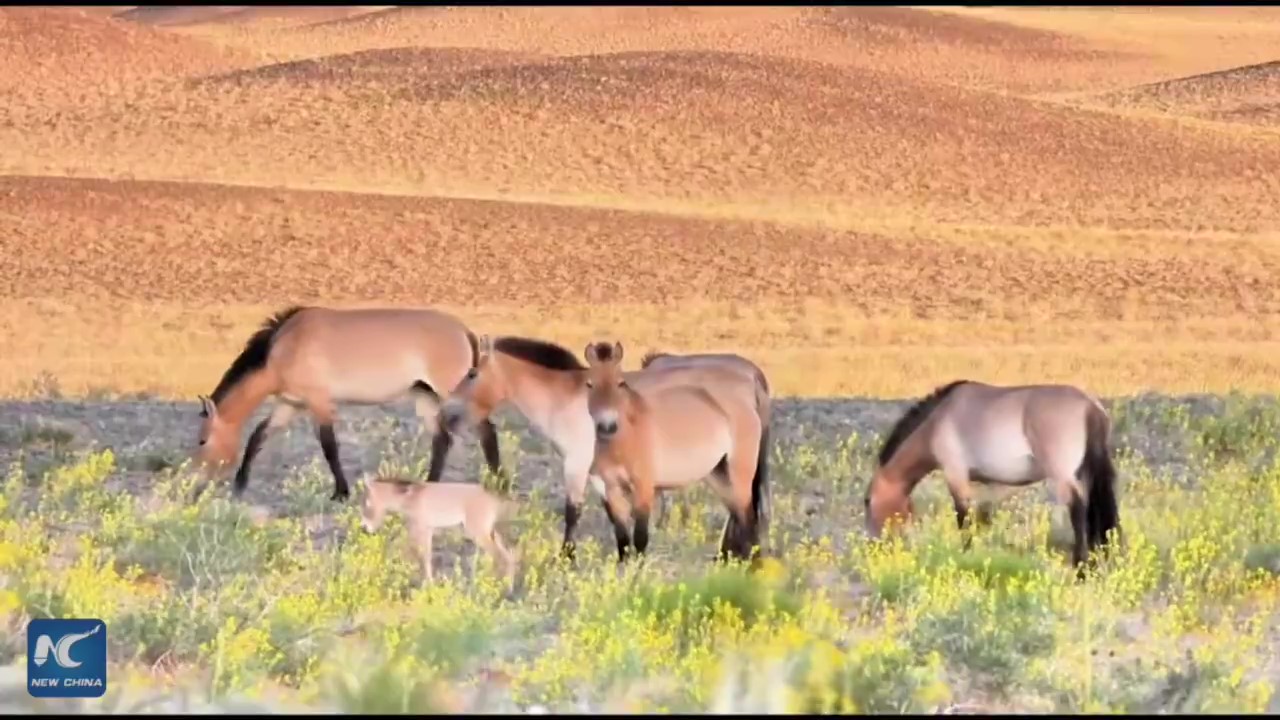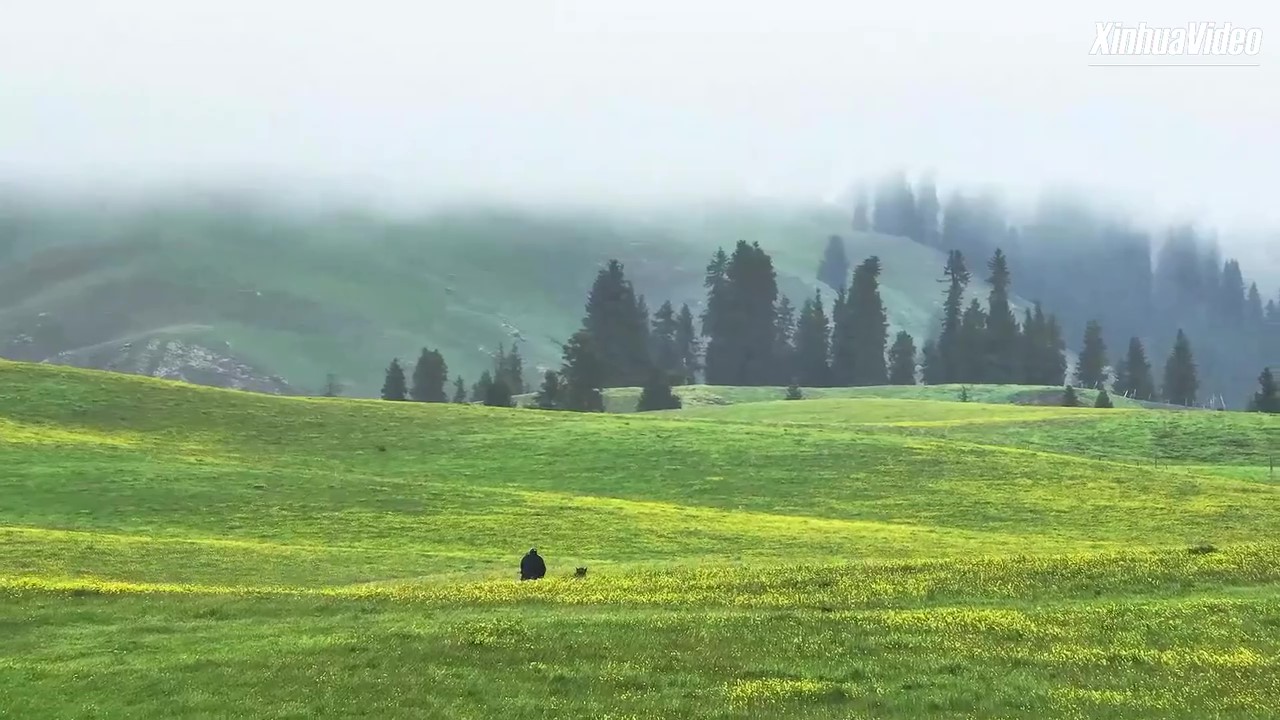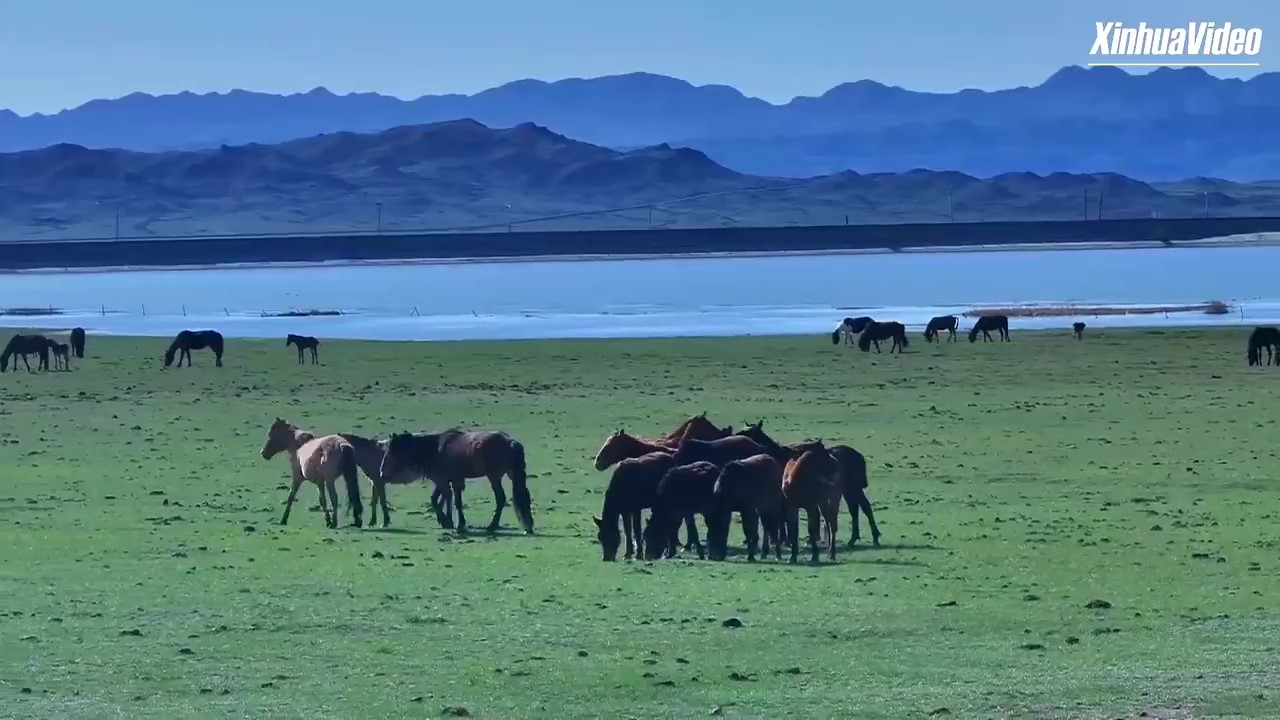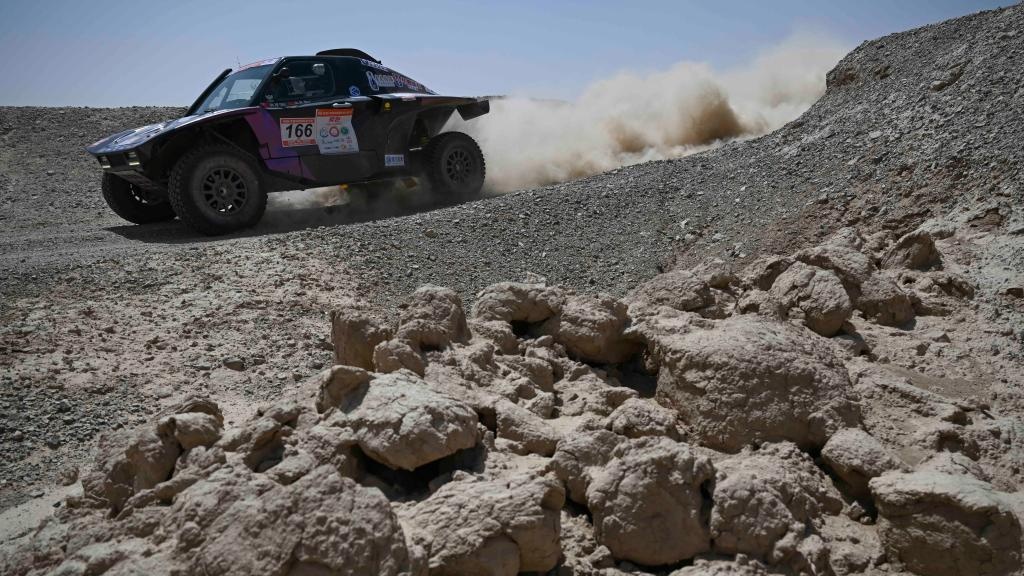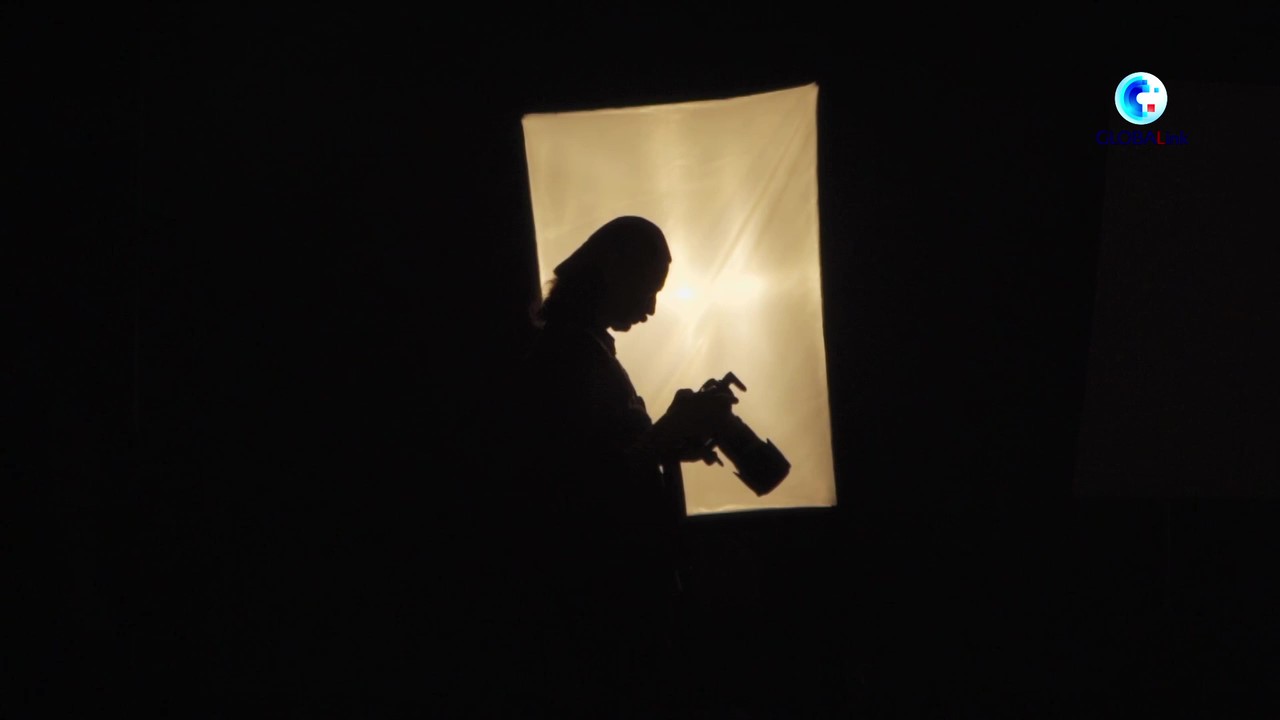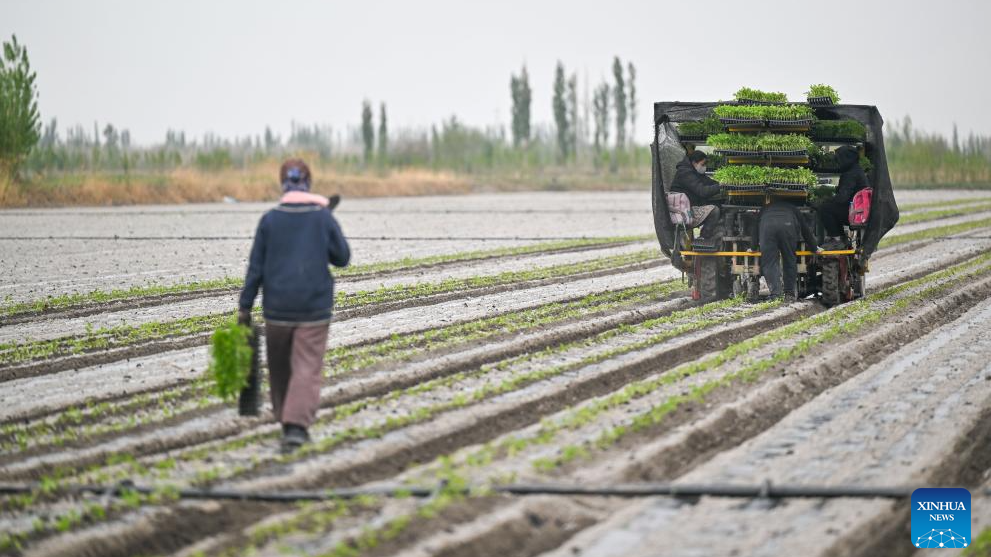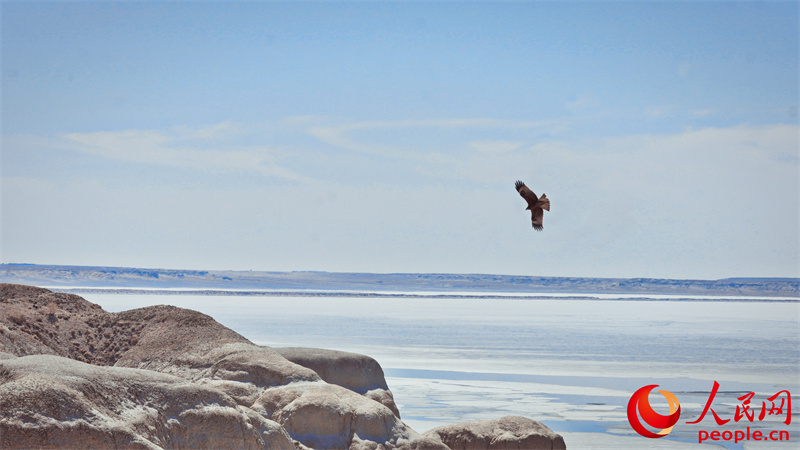At the break of day, Ehemat Tohti and his colleagues readied their equipment and embarked on their journey into the heart of the Taklimakan Desert, China's largest, commencing a day of patrol.
They are responsible for the maintenance work of a 220-kV transmission line spanning this desert, also known as the "Sea of Death."
Stretching over 264 km, the transmission line plays a crucial role in ensuring a stable power supply to counties and villages situated along the southern edge of the Taklimakan in northwest China's Xinjiang Uygur Autonomous Region, including Qiemo and Ruoqiang.
Ehemat Tohti, 55, is an electrical worker with the power supply company of Bayingolin Mongolian Autonomous Prefecture under the State Grid Xinjiang Electric Power Co., Ltd.
"We need to cross the desert once a month to check the status of the 729 transmission towers in order to ensure a normal power supply. The task is challenging, yet all worthwhile," he said.
In the autumn noon, the desert's surface remains searing hot, while the temperature fluctuation between morning and evening has changed significantly.
"At present, the temperature difference between morning and evening is about 20 degrees Celsius. It was particularly cold when we set off. As we advanced further, the temperature rose, only to drop again in the evening. Therefore, it's essential to have both thick and thin clothing as essentials," Ehemat Tohti said.
Binoculars, cameras and a tool bag weighing about 4 kg are part of the essential items during the patrol. Since the majority of the route is inaccessible for cars, Ehemat Tohti and his colleagues rely on motorcycles and foot travel to carry out their tasks, which include inspecting the power towers for any signs of damage to their structures.
They venture into the desert once a month, spending five to seven days during every trip, and walking about 10 km every day on average.
Trekking through the desert is exceptionally challenging. "The harsh environment is not only intolerable for individuals but also prone to causing frequent breakdowns of their motorcycles. Moreover, the hidden roots of red willow and populus euphratica trees, buried beneath the sand, often puncture the tires, posing an invisible risk," he said.
"The desert is beautiful, yet capricious, so you don't know what you will encounter," he added.
Ehemat Tohti and his colleagues have encountered a range of challenges during their patrols, including floods, swamps and encounters with wild animals such as boars and foxes.
Fortunately, in 2022, drones were incorporated into their patrol work, bringing about a substantial enhancement of their work efficiency.
"Human workers can patrol up to about 20 power towers a day, but with the help of drones, we can cover nearly 100 towers," he said. "Now we can devote more time and energy to address issues that are challenging to detect and resolve through technological means, such as identifying loose steel ropes in the power towers."
Ehemat Tohti said that retirement is not on his horizon. "I want to share my expertise with more people and continue expanding my knowledge."

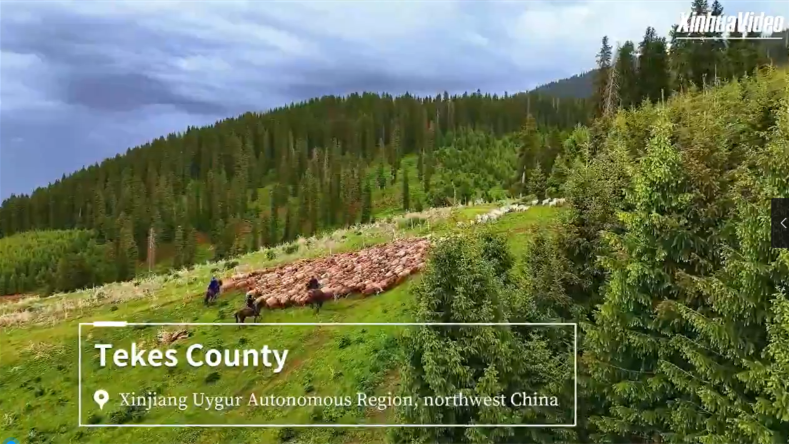
.png)

.png)

.png)






